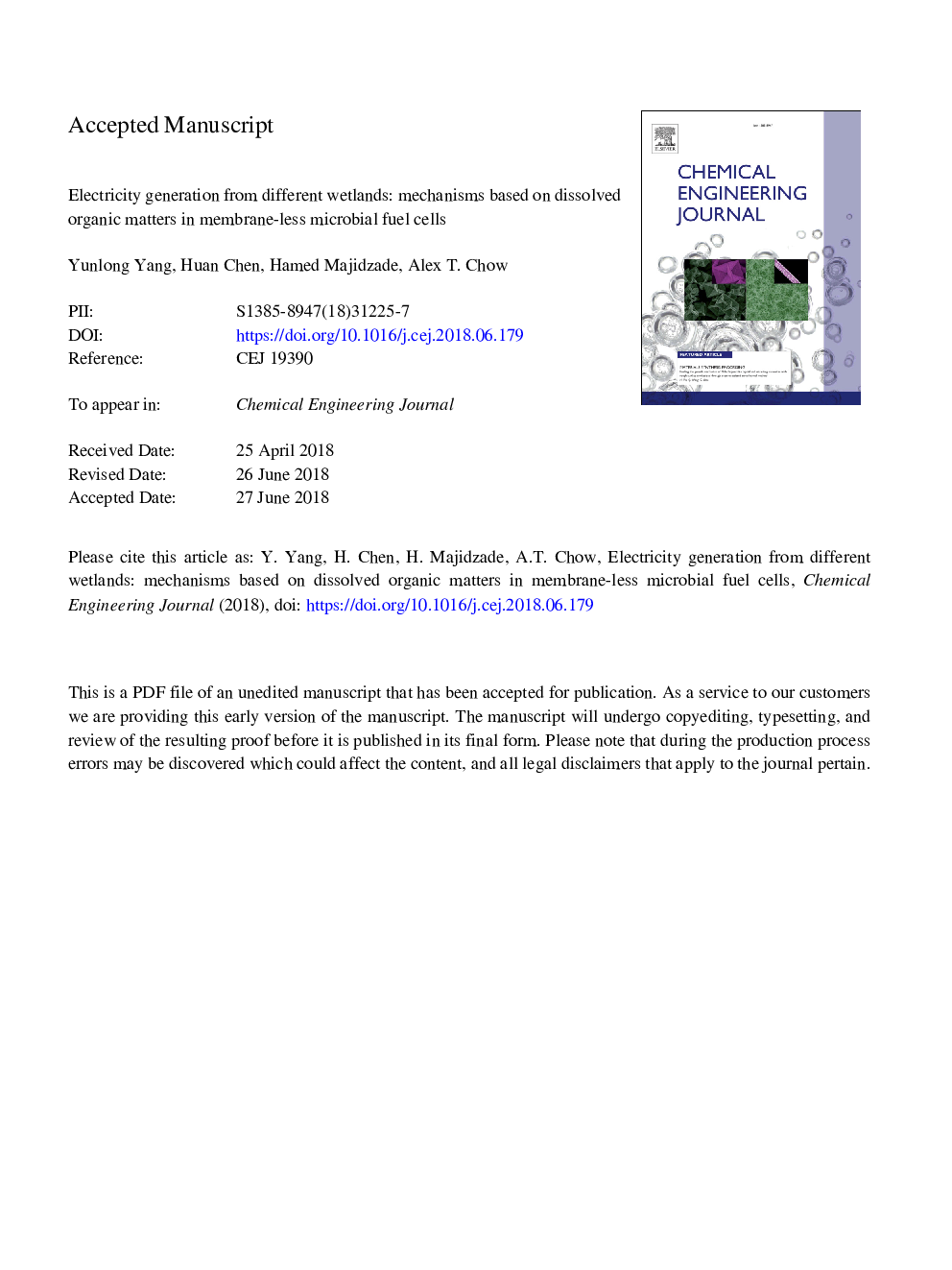| Article ID | Journal | Published Year | Pages | File Type |
|---|---|---|---|---|
| 6578373 | Chemical Engineering Journal | 2018 | 45 Pages |
Abstract
The membrane-less and biocathode-containing microbial fuel cells (MLBC-MFCs) were used for the electrical energy production from different wetlands, and the corresponding mechanisms were explored based on the characteristics of dissolved organic matters (DOM) in this study. The average voltage output on indoor MLBC-MFCs was 60â¯mV for the saltmarsh wetland water (SWW), 48â¯mV for the forest wetland water (FWW) and 71â¯mV for the FWW supplemented with sodium chloride (FWWS). For the field experiments, as high as 800â¯mV was obtained from the MLBC-MFCs installed in the forest wetland and the voltage output varying between 200â¯mV and 800â¯mV maintained approximately for half a year except for a few days with an extremely low temperature, while the voltage output from the MLBC-MFCs installed in the saltmarsh wetland went down to below 10â¯mV within 37â¯days likely due to the tide. The DOM before and after MFCs treatment was analyzed using the ultraviolet-visible absorption spectroscopy (UV-Vis) and the fluorescence excitation-emission matrix (EEM). Results showed that both carbon sources and anaerobic microorganisms included in subaqueous wetland sediments (SWSs) were vital for the electricity generation, and the food used to produce electrical energy mainly came from SWSs instead of wetlands water.
Related Topics
Physical Sciences and Engineering
Chemical Engineering
Chemical Engineering (General)
Authors
Yunlong Yang, Huan Chen, Hamed Majidzadeh, Alex T. Chow,
